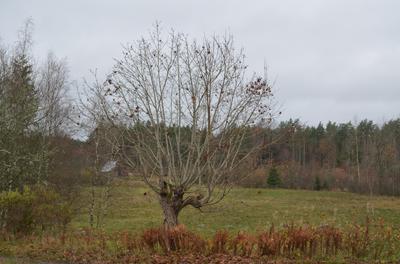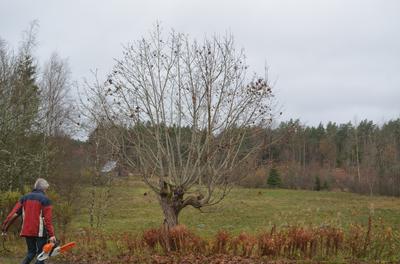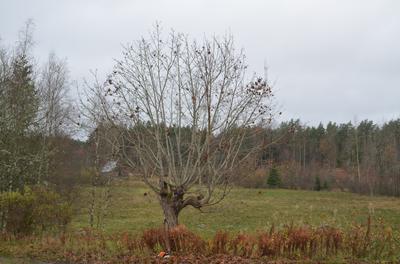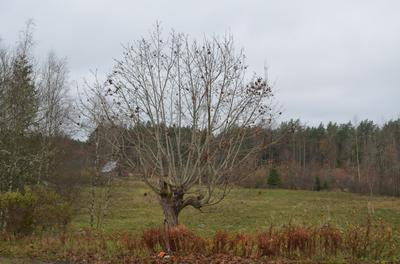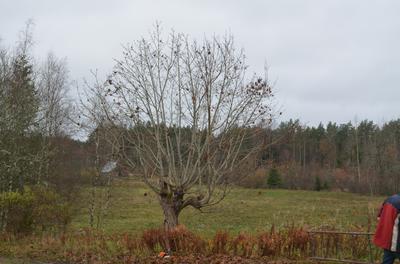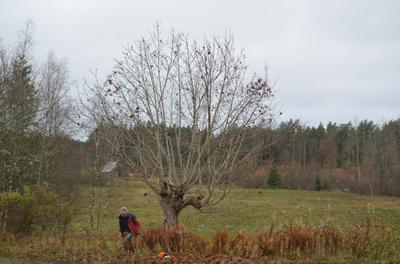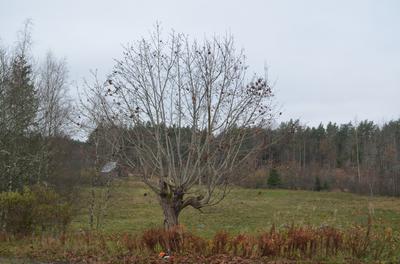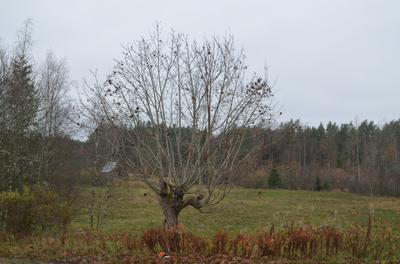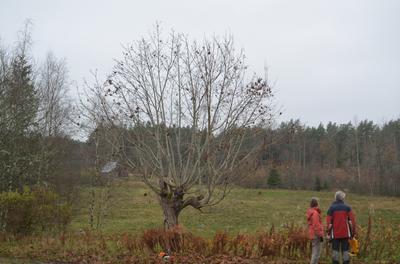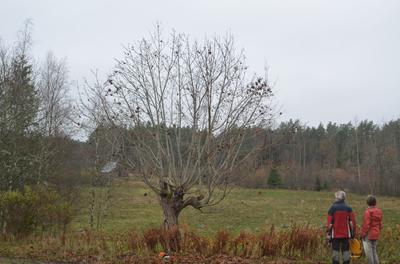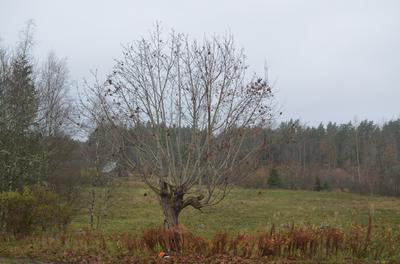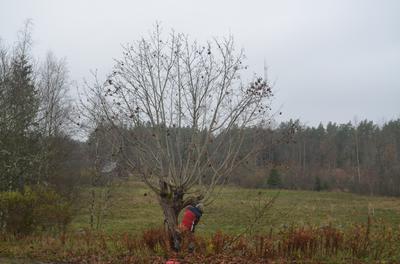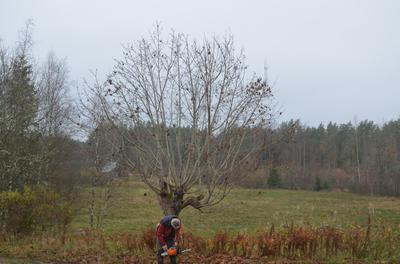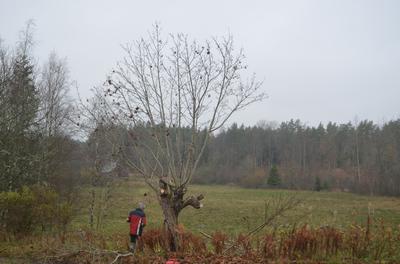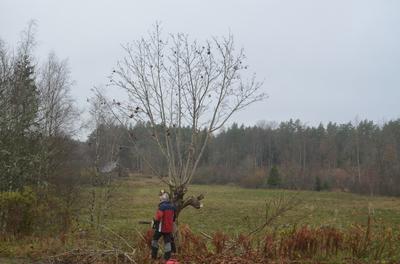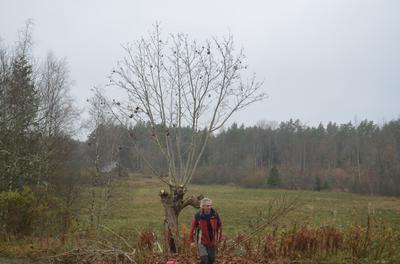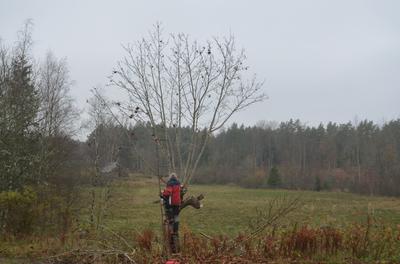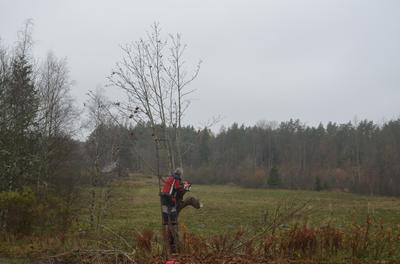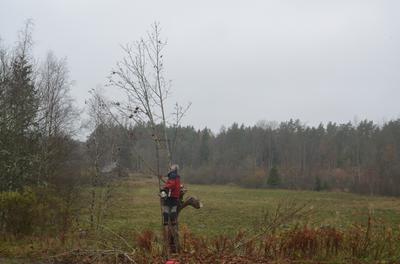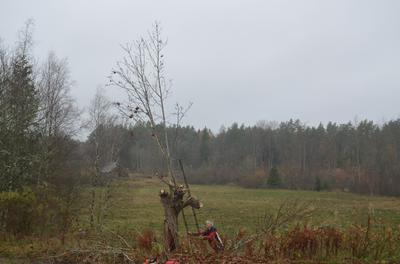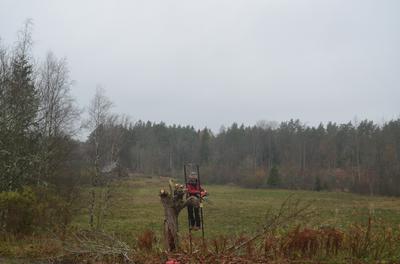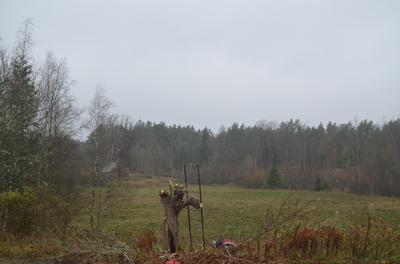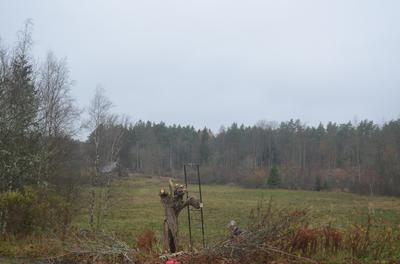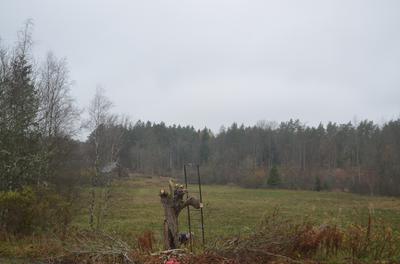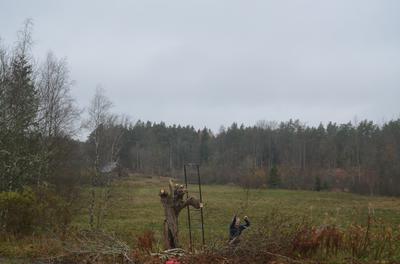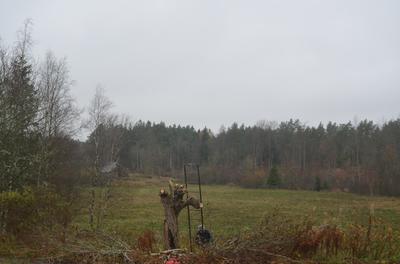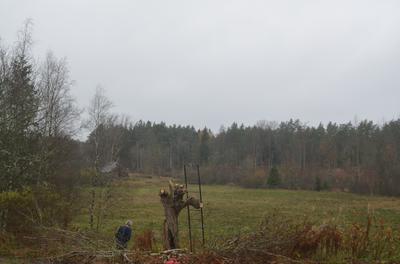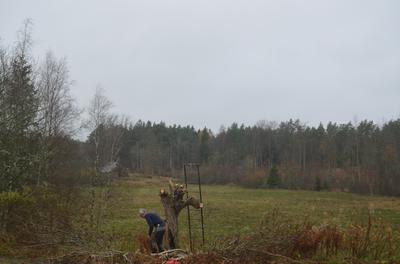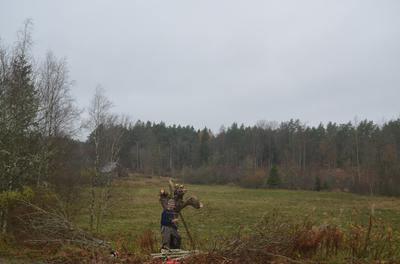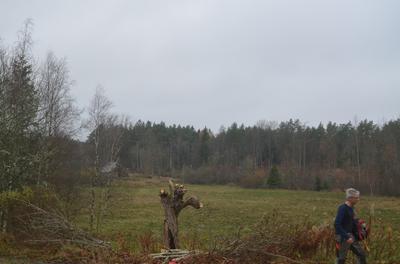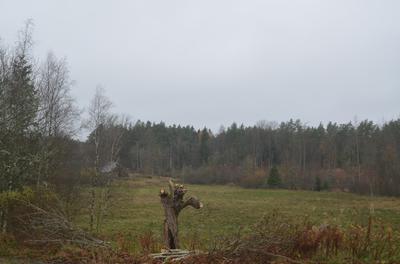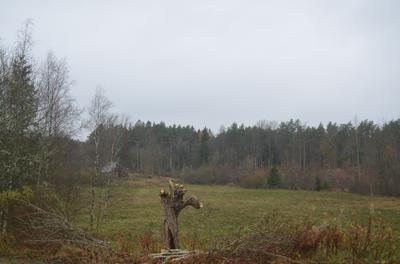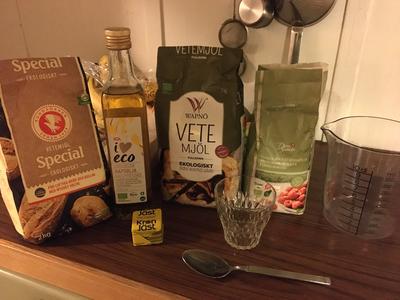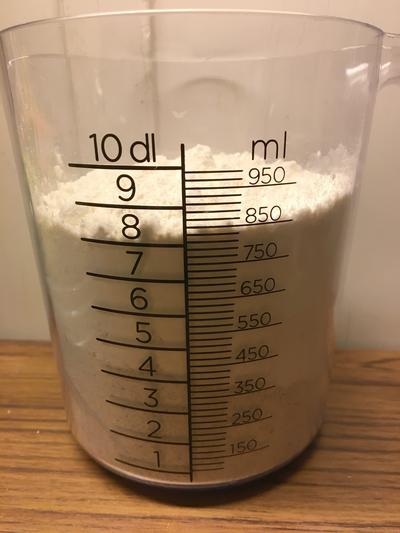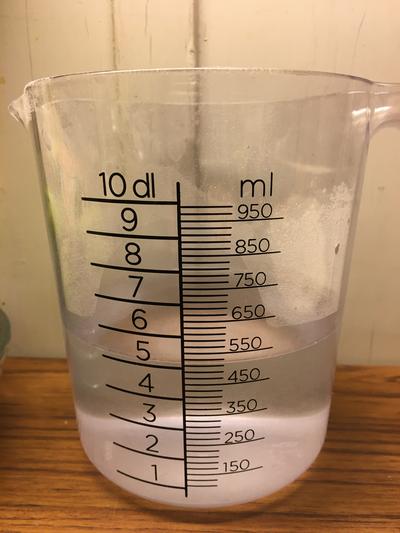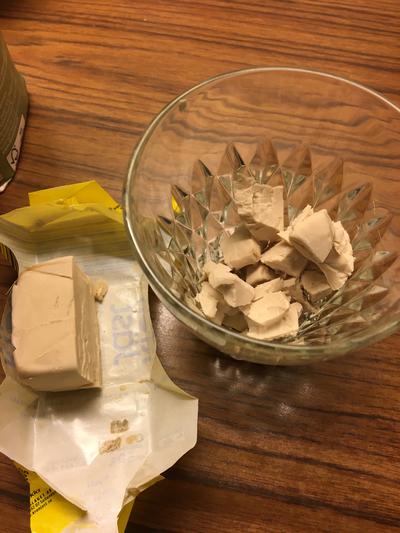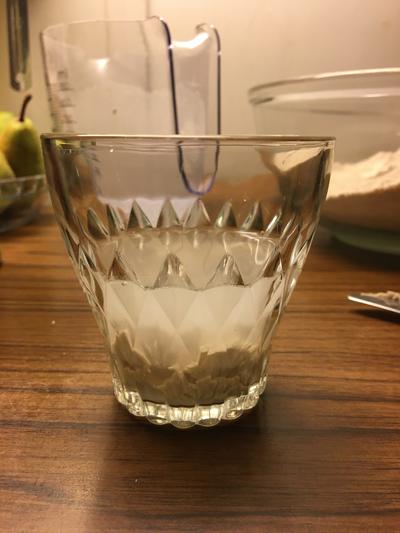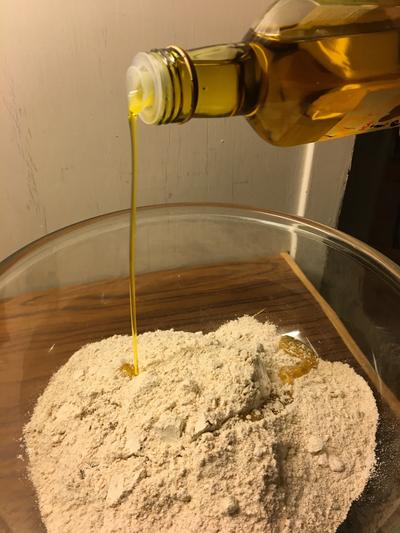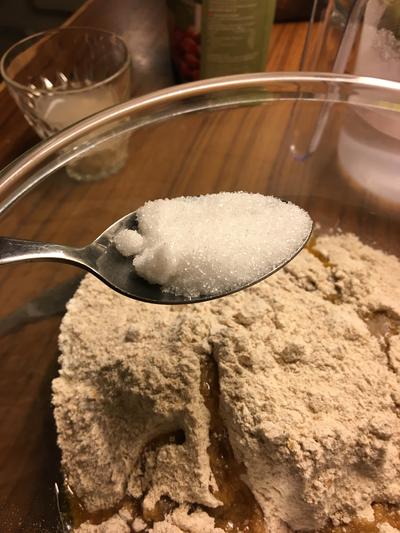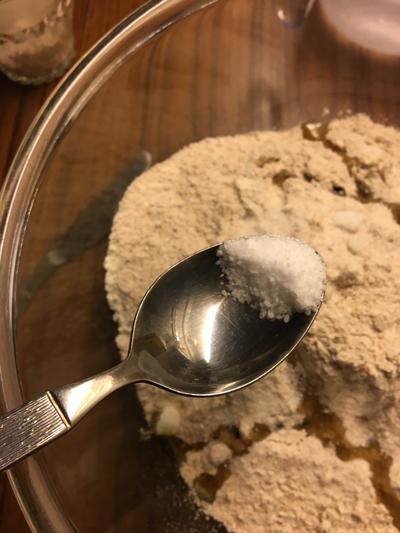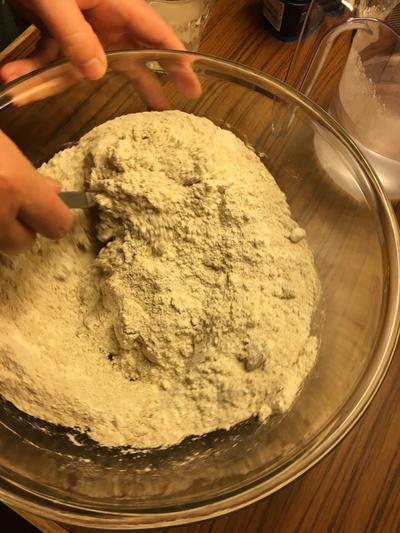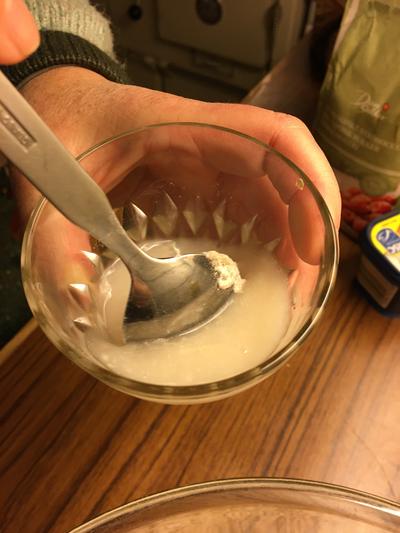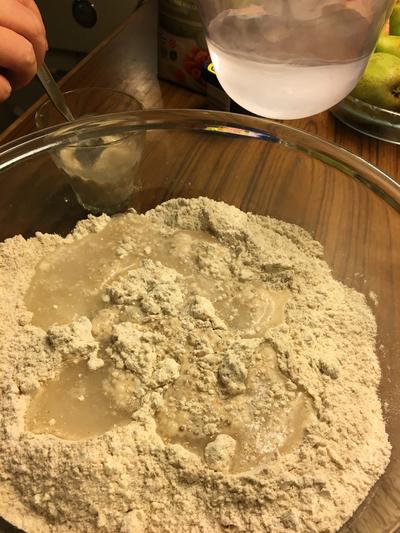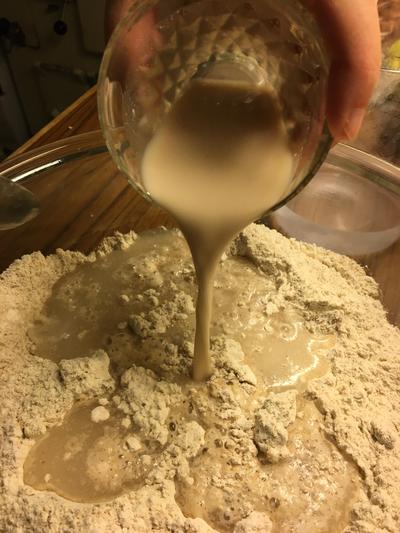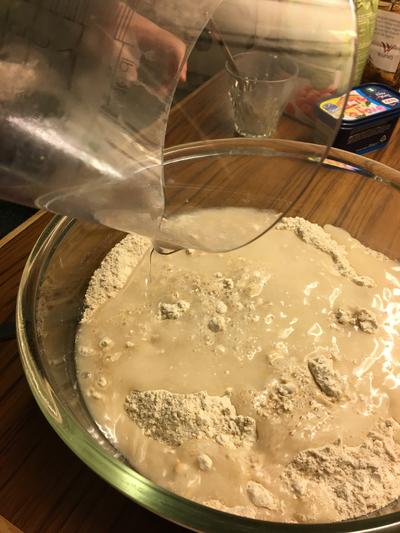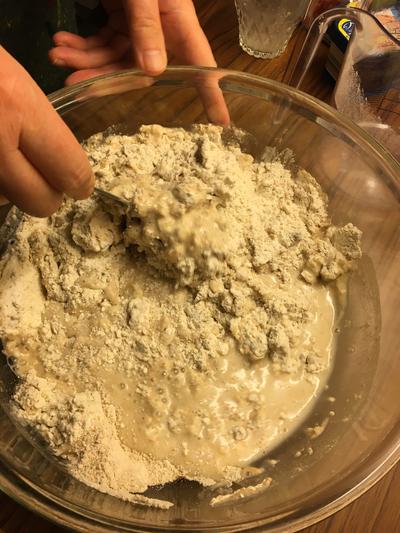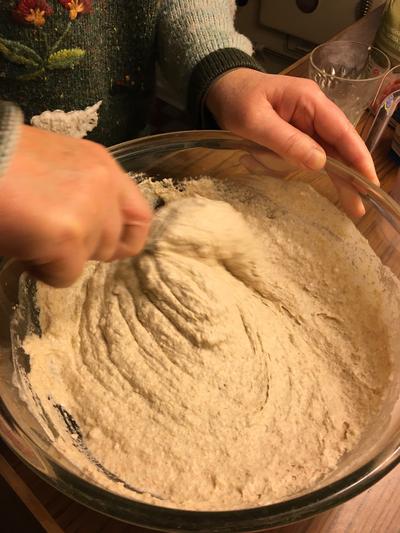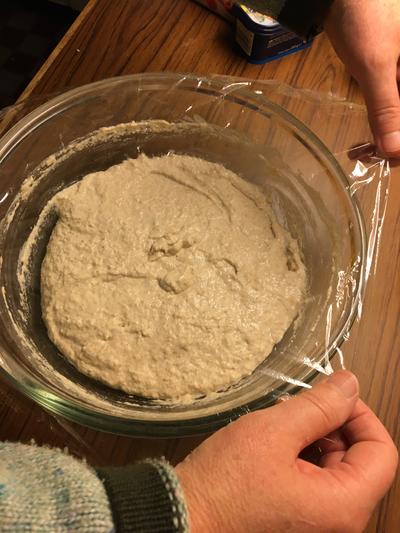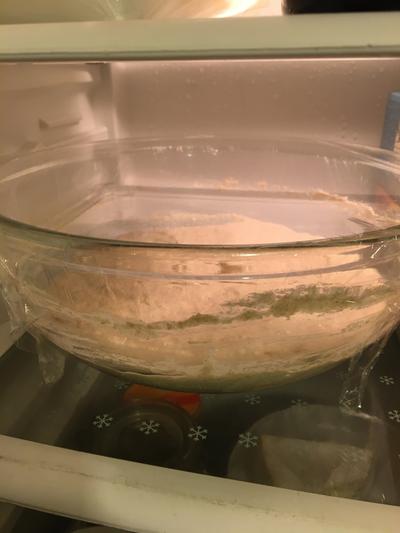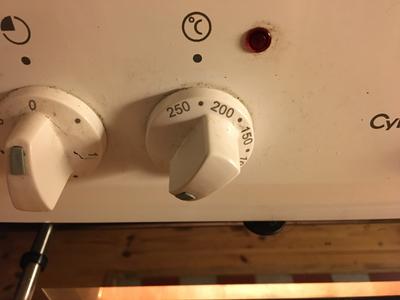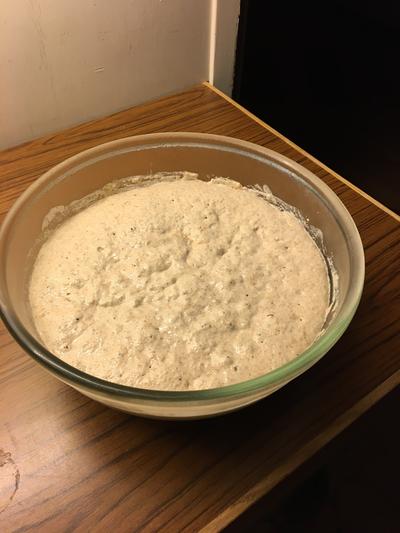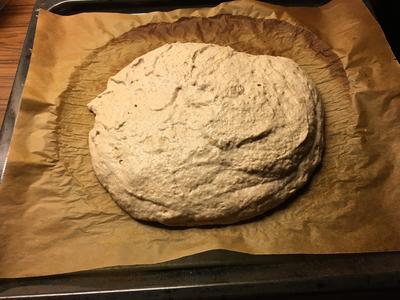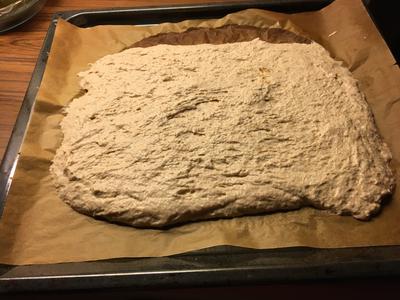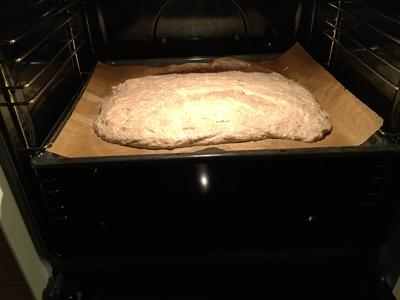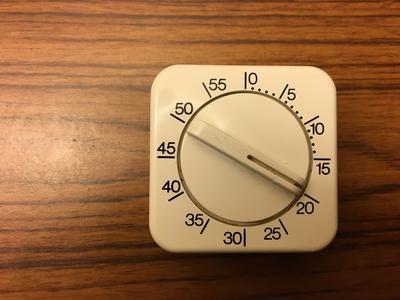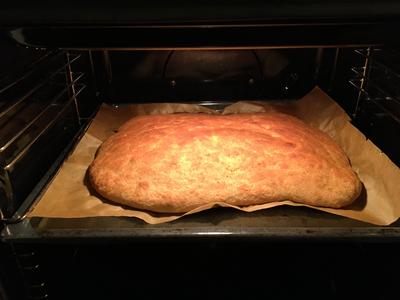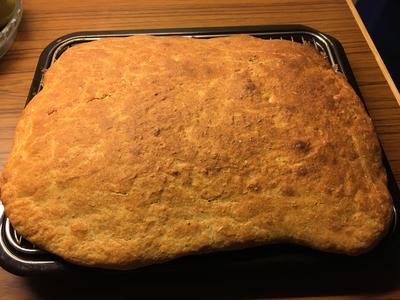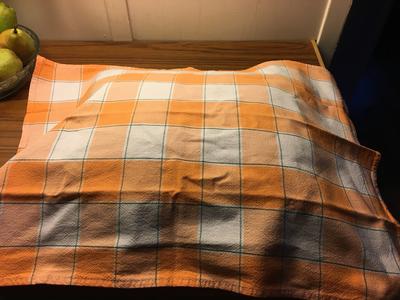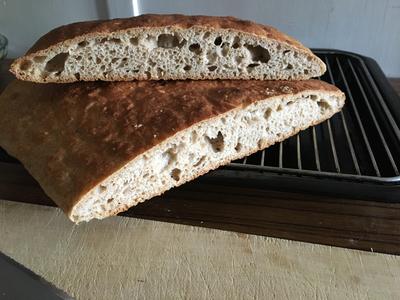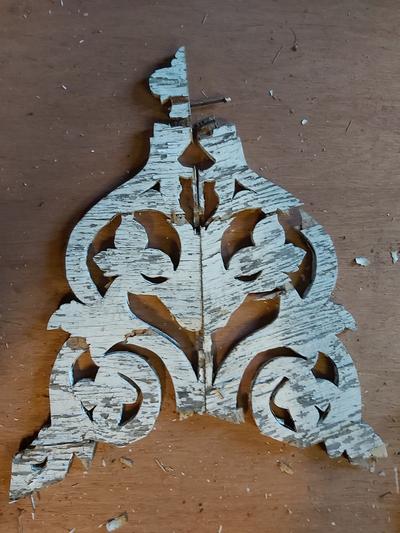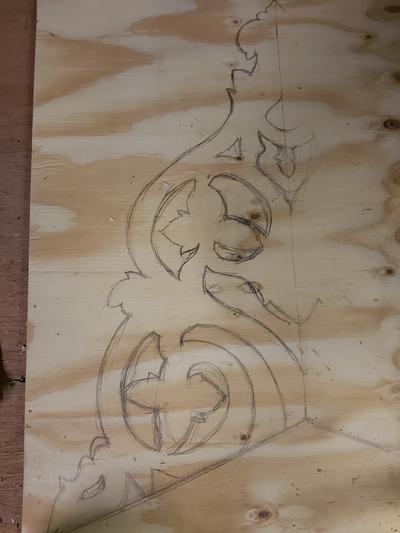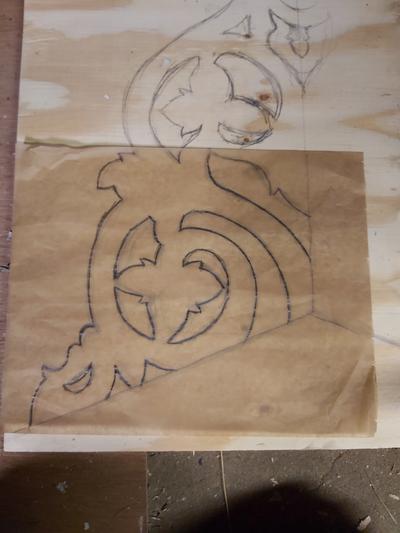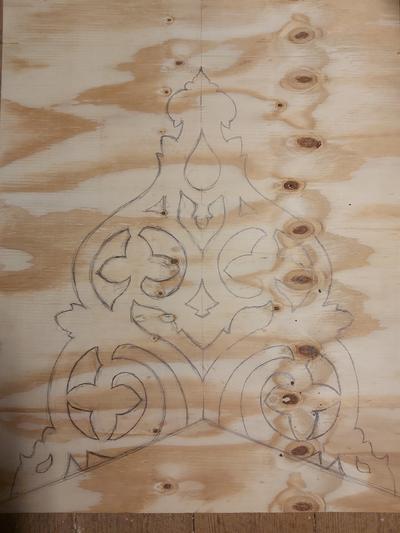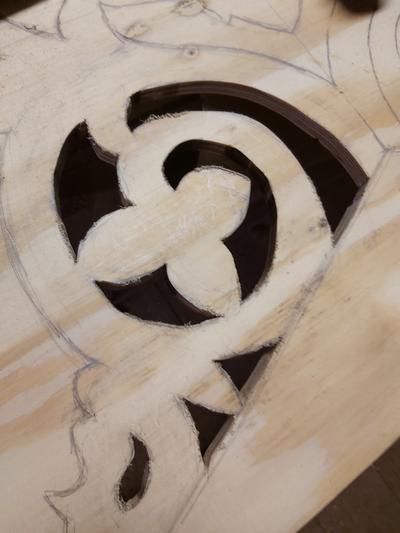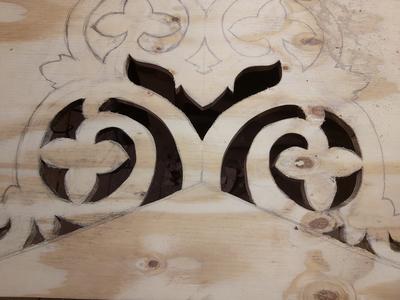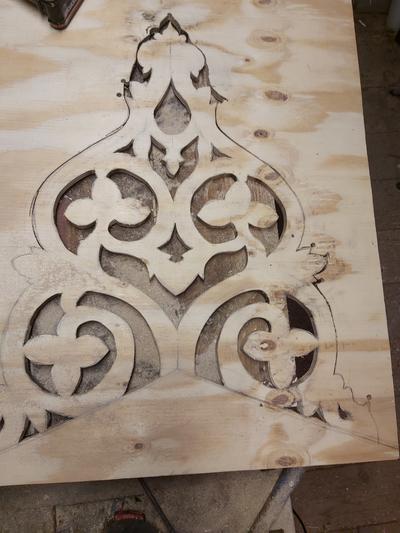| Kitchen bench top |
Working from the Swedish cottage |
Holidays at our Swedish cottage
This blog discusses how we celebrate holidays at our Swedish cottage.
Monday 31 October
The weather was a bit gray this morning. It is easier to take epically beautiful pictures in epic autumn weather. I don't think the rest of the week will be much of that. It was not that bad, though. Nevertheless, we decided to go on a mushroom excursion with my parents. Gathering mushrooms is a thing in Sweden, not only that. The places where you find mushrooms are secrets. Now my parents wanted to go on an excursion to reveal the secret locations of "their" mushrooms. Perhaps there is an underlying thought that it is better to do it while my parents are fit enough to do it, or maybe we just happened so that we arrive in Sweden in the mushroom period of the year. Whatever it was, it was fun and a great honor.
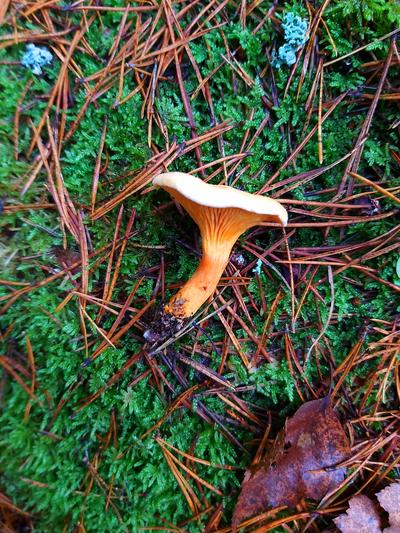 We walked out into the forest, and DM pointed out that "that" was a false funnel chantarelle. It should not be eaten. The false chantarelle was brighter orange than the real chantarelle. The one DM looked to find was brown, apart from the yellow chantarelle. If there is a chance of doing it wrong, it is mixing up the false chantarelle with the yellow. The funnel chantarelle has a brown hat, and the foot is slightly brighter yellow.
We walked out into the forest, and DM pointed out that "that" was a false funnel chantarelle. It should not be eaten. The false chantarelle was brighter orange than the real chantarelle. The one DM looked to find was brown, apart from the yellow chantarelle. If there is a chance of doing it wrong, it is mixing up the false chantarelle with the yellow. The funnel chantarelle has a brown hat, and the foot is slightly brighter yellow.
I spiced up the photo of the false chantarelle so that you can see it is orange-yellowish. It was a grey morning when I took this photo, so it was a bit dull light.
We walked into the forest; finding these secret treasures was a hands-on course. Usually, this was a little too late in the season for doing this, but it was still possible to try harvesting some mushrooms due to climate change. Either that or it was a mild autumn; I think it is climate change. Try to change my mind.
DM took us to one of her secret locations. "Usually, there should be chantarelle here somewhere." Sure enough, she found some. The funnel chantarelle is a little browner than the yellow and is the perfect camouflage against the brown ground. DM said, "it takes some practice to get mushroom eyes." We started to practice right away.
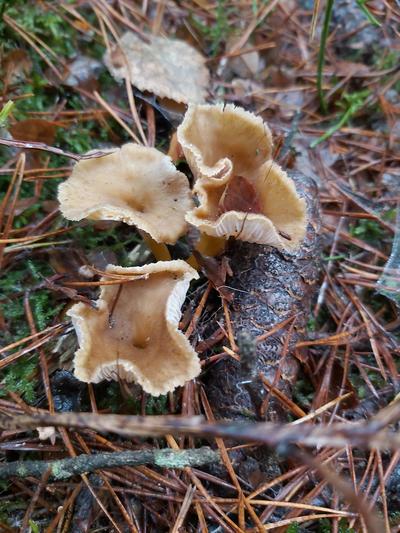 Here is the funnel chantarelle. These three chantarelles are growing in a cluster. Usually, there is a region of 5 meters (16 ft) with more chantarelles. On a good year, such an area can be double in size. Probably there is a chantarelle or network in the ground, and these things growing above ground are just the ends of the tentacles.
Here is the funnel chantarelle. These three chantarelles are growing in a cluster. Usually, there is a region of 5 meters (16 ft) with more chantarelles. On a good year, such an area can be double in size. Probably there is a chantarelle or network in the ground, and these things growing above ground are just the ends of the tentacles.
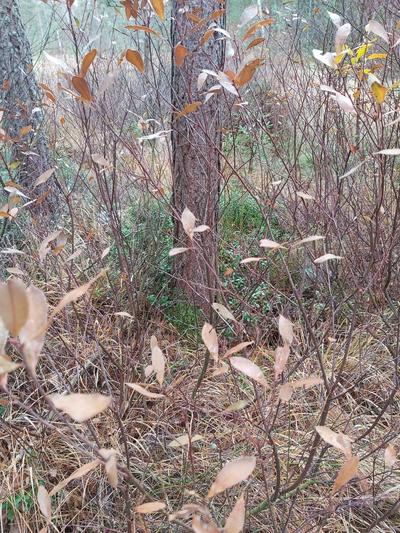 DM also pointed out that there grew Myrica gale (Pors in Swedish). It is a shrub that with many uses. The leaves have been used for insect repellency and tea, and you can dye yarn with it and use it for seasoning.
DM also pointed out that there grew Myrica gale (Pors in Swedish). It is a shrub that with many uses. The leaves have been used for insect repellency and tea, and you can dye yarn with it and use it for seasoning.
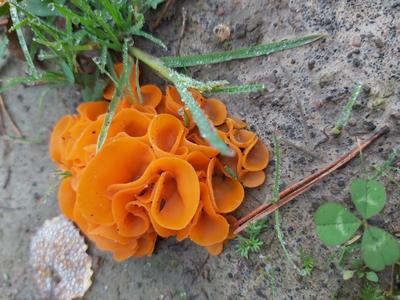 If you take the time and observe, there are beautiful things to discover in the forest. Here is an orange peel fungus (Aleuria aurantia). The Swedish Wikipedia said that it is eatable but not culinary recommended. I find that a funny way to express it. I did not see any urge to pick it up a put it in our basket. It is not so that all mushrooms are eatable; worse, some are poisonous. This is common knowledge: You cannot go out and pick anything and eat it. This has held us back from picking mushrooms until now, but here we had a course from DM.
If you take the time and observe, there are beautiful things to discover in the forest. Here is an orange peel fungus (Aleuria aurantia). The Swedish Wikipedia said that it is eatable but not culinary recommended. I find that a funny way to express it. I did not see any urge to pick it up a put it in our basket. It is not so that all mushrooms are eatable; worse, some are poisonous. This is common knowledge: You cannot go out and pick anything and eat it. This has held us back from picking mushrooms until now, but here we had a course from DM.
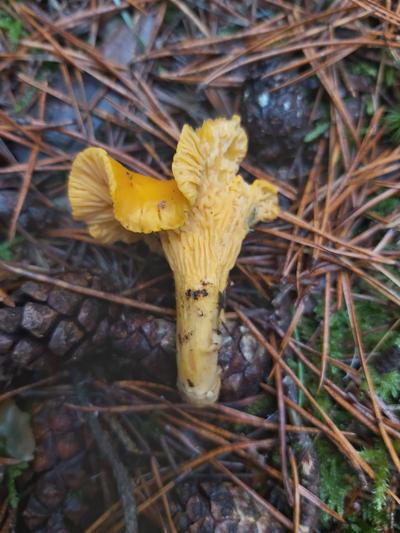 Here is a Cantharellus cibarius or Chantarelle. This is yellow with no hint of orange. DM called it yellow chantarelle, but that is her name for it. It can also be called golden chantarelle.
Here is a Cantharellus cibarius or Chantarelle. This is yellow with no hint of orange. DM called it yellow chantarelle, but that is her name for it. It can also be called golden chantarelle.
We found articles saying that the golden chantarelle can become bitter when dried. There was not much golden chantarelle, so we picked these regardless.
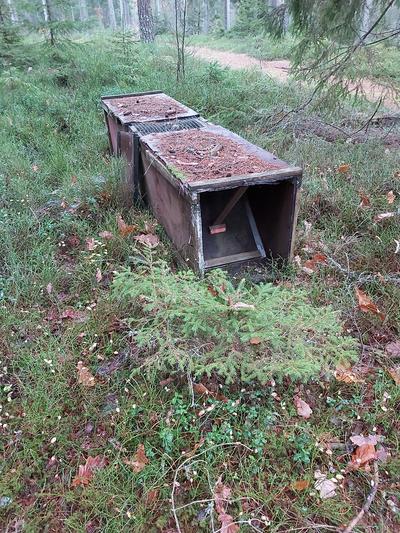 An abandoned otter trap had been lying in the nearby creek. Hunting otters were abolished in 1968, that is 54 years ago. It is interesting that at no moment during these 54 years the owner had the idea that he should remove the otter trap.
An abandoned otter trap had been lying in the nearby creek. Hunting otters were abolished in 1968, that is 54 years ago. It is interesting that at no moment during these 54 years the owner had the idea that he should remove the otter trap.
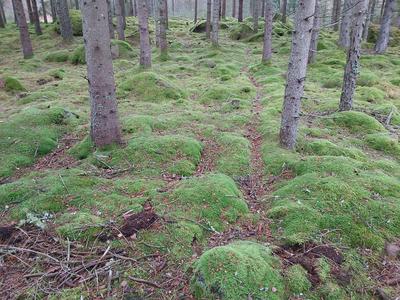 The forest here looks like it should in paintings of John Bauer. I do think that this landscape would be ripped up if the forest was to be harvested. The trees here might need another ten years, but then they will be harvested. The machine harvesting will disturb the moss. The next challenge is the machines used to prepare the ground for planting new trees. After that, the ground can rest again, but at that point, the habitat is totally changed. Grass and shrubs will establish. It will take another fifty years before it is near the way it looks today. Lets us enjoy it as it is now!
The forest here looks like it should in paintings of John Bauer. I do think that this landscape would be ripped up if the forest was to be harvested. The trees here might need another ten years, but then they will be harvested. The machine harvesting will disturb the moss. The next challenge is the machines used to prepare the ground for planting new trees. After that, the ground can rest again, but at that point, the habitat is totally changed. Grass and shrubs will establish. It will take another fifty years before it is near the way it looks today. Lets us enjoy it as it is now!
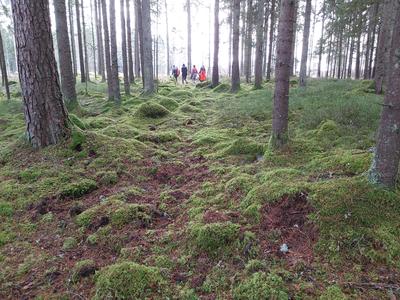 In recent years wild pigs established themselves in these forests. They also change the landscape when they try to find eatables in the ground. It is okay when they are in the forest. It is not so lovely when they come into the village and start to turn over lawns as tiller machines.
In recent years wild pigs established themselves in these forests. They also change the landscape when they try to find eatables in the ground. It is okay when they are in the forest. It is not so lovely when they come into the village and start to turn over lawns as tiller machines.
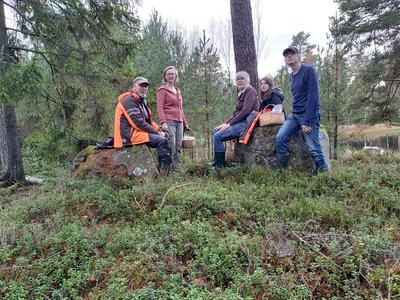 We walked toward recent clearcutting. The area of completely cut forests is challenging to walk due to leftover stuff lying in the landscape. On the other side, we had a little bit of a rest before we continued home.
We walked toward recent clearcutting. The area of completely cut forests is challenging to walk due to leftover stuff lying in the landscape. On the other side, we had a little bit of a rest before we continued home.
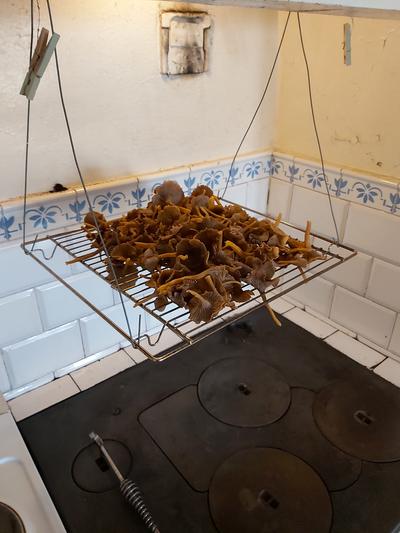 When we came home with the treasures, we hung a large portion on an oven grid above the woodstove. The other part was destined for a stew the same evening. Dry yellow foot chantarelles can be stored for a long time and taste fresh. We use the wood stove in the autumn, and it is convenient to dry the mushrooms over it simultaneously.
When we came home with the treasures, we hung a large portion on an oven grid above the woodstove. The other part was destined for a stew the same evening. Dry yellow foot chantarelles can be stored for a long time and taste fresh. We use the wood stove in the autumn, and it is convenient to dry the mushrooms over it simultaneously.
I think it is helpful to know a couple of ways to get access to calories. A diet of only chantarelles will not feed you during a cold winter, but perhaps it is one of many sorts of food you can get hold of, and not only that, they can bring variation to the food. The future is uncertain; how will a world look like during a full-on climate catastrophe? Knowing more ways than the supermarket to find food is probably better.
It was a great beginning to the holiday. After this, I connected our third trailer to the car and drove to a hardware store to buy material I would use for a project later this week; I will restore the spire of the front porch. I also brought our brushcutter to service.
Tuesday 1 November
The main task for today was to pollard the Acer (Acer platanoides) tree in front of the farmhouse. Somehow I could not find the helmet, so that was annoying. I searched for the helmet for one hour but could not find it. Then I decided to pollard the Acer without a helmet.
|
Here I started to prepare. |
|
|
Got the saw. |
|
|
Started searching for the helmet. |
|
|
|
|
|
|
|
|
|
|
|
|
|
|
|
|
|
Could I forget the helmet somewhere on this 16.5-hectare (407 acres) of land? |
|
|
Well, the helmet can be anywhere. |
|
|
|
|
|
|
|
|
I decided to pollard without a helmet. |
|
|
Starting the saw. Took a couple of branches. |
|
|
|
|
|
Getting a ladder. |
|
|
|
|
|
|
|
|
|
|
|
|
|
|
Done. Well, kind of. |
|
|
Started collecting the branches. |
|
|
|
|
|
|
|
|
|
|
|
|
|
|
|
|
|
|
|
|
|
|
|
|
|
|
|
|
|
|
While searching for the helmet, I went to my parents to see if I had forgotten the helmet there. They had some weights for the tiller machine that I brought to the Netherlands during our last trip to the farm. When I placed the weights in the car's trunk, the tailgate did not stay upright as it usually does, so I got it on me, precisely above my right shoulder. Oh, that hurt. I pretended it did not happen, and my parents did not notice.
Apart from the lost helmet and the pain above my right shoulder, the pollarding action went pretty smoothly. This Acer tree is badly battered, so bad it has grown a replacement tree inside the original tree, and the original tree has burst open and rotted away. I am curious how it will develop from here. I will show you pictures when it is growing new branches.
I wish I had a timelapse functionality on my blog. Perhaps I will build one because this is the second time I wish to show a timelapse from my site. For now, it will do with the regular slideshow.
After this task, we went to the city. Not a big city, we went to Gislaved, a small one. It was grey weather, and not many people were around in centrum. We went to the bank, and DD went to a clothes shop to buy some essentials. The second-hand shop was open, and we like to shop at second-hand shops. I found a wool sweater and a mailbox. We can bring the mailbox to the Netherlands, where we got my homemade mailbox, but it leaks when it rains, which is not so convenient. This mailbox was made from metal and appeared a lot more robust.
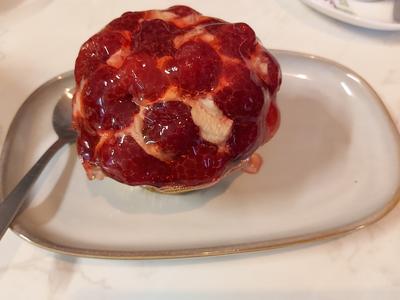 Before going home, we went to the local confectionery. I had a cupcake with loads of berries. It was delicious!
Before going home, we went to the local confectionery. I had a cupcake with loads of berries. It was delicious!
In the evening, when blogging, I sat back and could feel the pain in my shoulder.
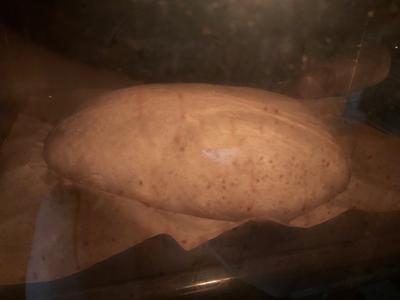 Wednesday 2 November
Wednesday 2 November
DW started this morning by baking bread. Our new house in the Netherlands has no proper oven at the moment, so bread baking is impossible. After the holidays, the kitchen will be installed, and that will be great.
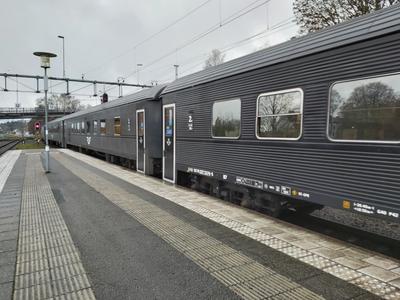 Today we brought DD to the train station. She was going further north to meet up with friends. It was interesting to see Swedish trains. From the outside, they looked old to me. On the inside, they were refurbished, I suppose.
Today we brought DD to the train station. She was going further north to meet up with friends. It was interesting to see Swedish trains. From the outside, they looked old to me. On the inside, they were refurbished, I suppose.
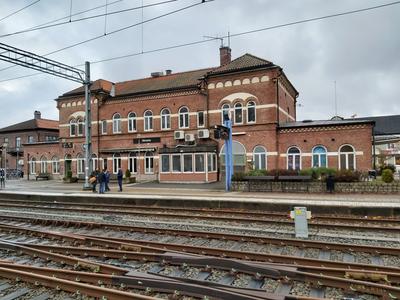 The train station waiting room was undergoing maintenance, so it had no café.
The train station waiting room was undergoing maintenance, so it had no café.
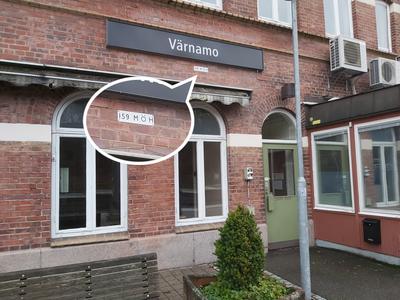 There was a sign informing about how many meters over the sea level this station was, MSIL. It was 159 meters, which is not bad; we live at minus 4 and a half. I suppose the sign was not at 159 meters but at the ground of the house. No extra information was available about that.
There was a sign informing about how many meters over the sea level this station was, MSIL. It was 159 meters, which is not bad; we live at minus 4 and a half. I suppose the sign was not at 159 meters but at the ground of the house. No extra information was available about that.
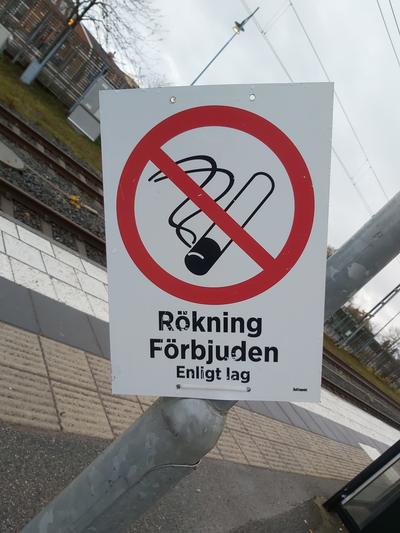 Speaking of signs, I found a funny sign on the platform. It said that smoking was prohibited. Fair enough, I can get that smoking is prohibited. Then with smaller letters: according to law. That last part was essential; that was clear.
Speaking of signs, I found a funny sign on the platform. It said that smoking was prohibited. Fair enough, I can get that smoking is prohibited. Then with smaller letters: according to law. That last part was essential; that was clear.
Then we went back to the cottage.
Thursday 3 November
Today it was epic autumn weather, and today we had set out to finish tidying up after pollarding the Acer tree. Next to the Acer, we got another tree, a large shrub. It is a bird cherry tree (Prunus padus). In Sweden, the blooming of bird cherry trees indicates the start of the summer. It has got a bit wide, so tractors using our road are driving around this tree, which is polite, but the road is slowly progressing into the lawn, which is less pleasant.
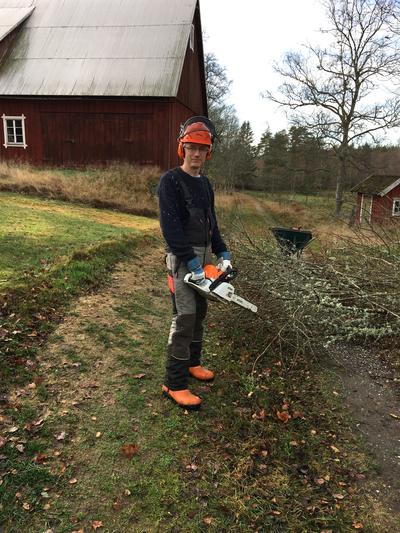 While DW finished collecting the Acer branches, I started to prune the bird cherry tree. Today I had my new hat, and I still have no idea where the previous one went. It might show up one day.
While DW finished collecting the Acer branches, I started to prune the bird cherry tree. Today I had my new hat, and I still have no idea where the previous one went. It might show up one day.
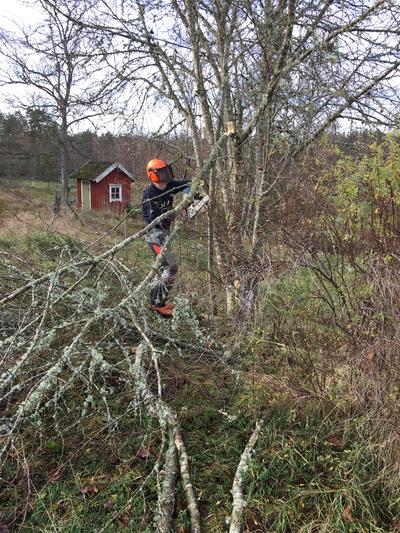 It is rapid to make a cut with this powerful chainsaw. One has to consider the consequences beforehand when starting to cut. A branch will fall down, and to avoid it rips up a long strand of the stem below the branch. I first put a cut under it. Then I cut off the branch a bit above the undercut. As a finishing touch, I cut off the stump at a nice angle so moisture could drip off easily. In short, this sums up all I know about arboriculture.
It is rapid to make a cut with this powerful chainsaw. One has to consider the consequences beforehand when starting to cut. A branch will fall down, and to avoid it rips up a long strand of the stem below the branch. I first put a cut under it. Then I cut off the branch a bit above the undercut. As a finishing touch, I cut off the stump at a nice angle so moisture could drip off easily. In short, this sums up all I know about arboriculture.
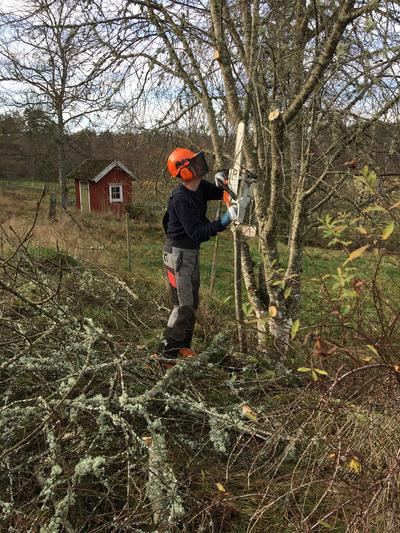 We talked about what shape we wanted to create with the bird cherry. It had a chunky look, and we wanted to give it a more upright appearance, with the added benefit that tractors could pass it more easily. It is not so that you can go and cut branches since it is a three-dimensional shape. I walked around it and assessed the impact of cuts, and in the end, it had gotten a lovely pruning.
We talked about what shape we wanted to create with the bird cherry. It had a chunky look, and we wanted to give it a more upright appearance, with the added benefit that tractors could pass it more easily. It is not so that you can go and cut branches since it is a three-dimensional shape. I walked around it and assessed the impact of cuts, and in the end, it had gotten a lovely pruning.
This was just the beginning. Now we had to tidy up the branches of the bird cherry tree as well.
After the cherry tree, DW pruned honeysuckle shrubs growing along the side of our workshop house.
My next task for today was replacing one of the house's gutters. I drove to a little city in the neighborhood where they sell these things. To be sure, I connected our third trailer to the car. I had the feeling that gutters come in long pieces.
I got myself an out-of-town experience. To begin with, the place I went to was situated in a vast house. What side of the house where I supposed to go to? Luckily Google maps pointed me to one side of the house.
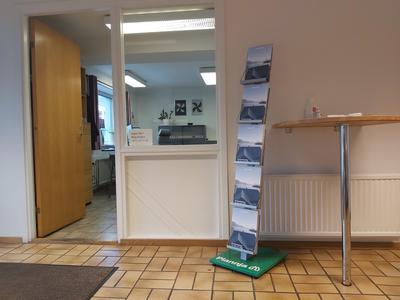 I entered through a door that looked like it was meant to be used by me. It was unclear if this factory was doing business with private persons. No one was there. I shouted into the office, "Hallo," and no one answered. There was a radio, and it looked like a person had been here recently. In the hall, samples were hanging on a board. Gutters, downpipes, whatchamacallit. In the office, two photos hung showing four gutter caps arranged as a flower. One with white background and one with a black background.
I entered through a door that looked like it was meant to be used by me. It was unclear if this factory was doing business with private persons. No one was there. I shouted into the office, "Hallo," and no one answered. There was a radio, and it looked like a person had been here recently. In the hall, samples were hanging on a board. Gutters, downpipes, whatchamacallit. In the office, two photos hung showing four gutter caps arranged as a flower. One with white background and one with a black background.
A small sign said that one had to call Anders. I called Anders, but he was in the middle of a phone call. I waited.
There was a little bowl of water on the floor, but I did not make any conclusions. So I waited, and then I called Anders again; he was still on a call. To be a salesperson, he is making long phone calls, was my conclusion. I waited.
I went outside again. There was no one there. The streets around the building were empty. It turned out to be so that the building housed several different companies. I walked back to the company where I wanted to buy a gutter. It had a door next to the office door. I peeked through the window, and sure enough, there were gutter things, downpipes, and whatchamacallit. I waited.
Now, if Anders could turn up, I was allowed to buy a gutter, then this could be a success anyway. I waited.
Tralala, there came Anders! He had been walking his dog. That is what you do here; you leave the office open and walk your dog. I could buy one gutter, no problem. I also bought a cap for the gutter. Anders charged me with an invoice because he did not do cash. It did not surprise me since he also left his office unlocked when walking his dog. Then I went to another shop in the city and bought a lock for the barn, there I had to pay at the cashier as usual. Then I went home.
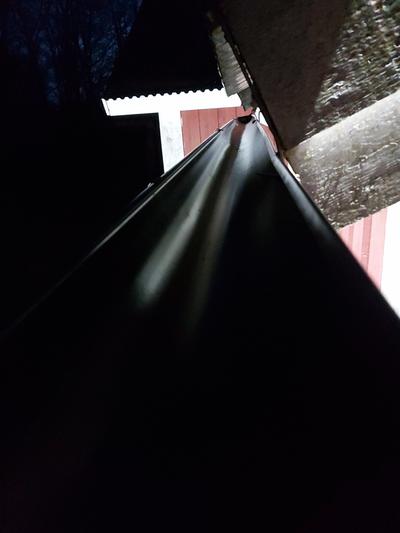 It was almost dark when I came back to the house. Did that stop me? No. I took down the old gutter and hung up the new gutter. I had a lamp to assist me. It felt rewarding to start and finish a task on the same day.
It was almost dark when I came back to the house. Did that stop me? No. I took down the old gutter and hung up the new gutter. I had a lamp to assist me. It felt rewarding to start and finish a task on the same day.
Friday 4 November
Today it was supposed to rain. We went outside to work on various things. DW raked leaves from the lawn, gathered garden furniture, and brought those to the barn.
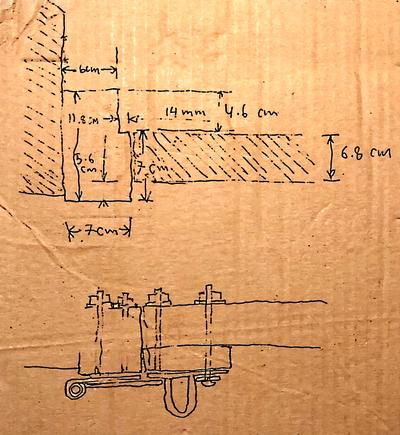 I started working on the padlock project for one of the barn doors. All barn doors got padlocks except one; it has been blocked until now. Not that we keep anything valuable there, but I like the feeling that it should take some effort to get inside. We search for a good balance between the value of the stuff inside and the costs of the locks. Nevertheless, that one door that missed a padlock will now get one. Thereby it is possible to open the door from the outside. That could be useful.
I started working on the padlock project for one of the barn doors. All barn doors got padlocks except one; it has been blocked until now. Not that we keep anything valuable there, but I like the feeling that it should take some effort to get inside. We search for a good balance between the value of the stuff inside and the costs of the locks. Nevertheless, that one door that missed a padlock will now get one. Thereby it is possible to open the door from the outside. That could be useful.
The main challenge was a 5.6 centimeters difference between the door and the door post, and I needed to give the padlock hasp an even surface. I figured if I could find a plank in the barn of 5.6 centimeters thick, I could mount the hasp on top of that.
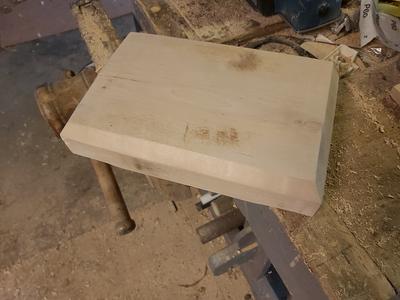 I found that lump of wood with the correct thickness! I cut off a piece with the chainsaw and sawed it to a block with a regular saw. It was made of birch, which is relatively hard wood. Then I made the surface smoother with a hand planer. The block got chamfered edges to make it a slightly more friendly look.
I found that lump of wood with the correct thickness! I cut off a piece with the chainsaw and sawed it to a block with a regular saw. It was made of birch, which is relatively hard wood. Then I made the surface smoother with a hand planer. The block got chamfered edges to make it a slightly more friendly look.
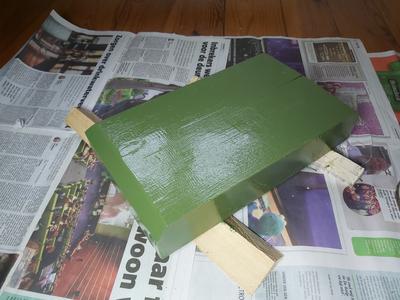 Then I wanted to paint the block. It turned out to be so that we still got the original green paint of the door that DF put on it 15 years ago. I decided to use the same paint; it was still in good condition.
Then I wanted to paint the block. It turned out to be so that we still got the original green paint of the door that DF put on it 15 years ago. I decided to use the same paint; it was still in good condition.
The drying time was not that fantastic, though; it had to dry for 12 hours at 20 degrees Celsius. I checked on it 7 hours later, and it was still not dry. We will see if it is dry Saturday morning. It will need another layer of paint, though. That means it can be mounted on Sunday. One needs to be equipped with patience; in this business, that is clear.
After the padlock project, I cleared trees that had sprouted in places where we did not want any trees. The rain that was supposed to come today never came. In the evening, DW prepared fridge bread.
Fridge Bread
This bread can be prepared in the evening so that the yeast can ferment overnight in a fridge.
|
Here are the ingredients of the bread:
Here are the tools you need:
|
|
|
Measure four deciliters of bread flour and four deciliters of whole grain flour in the measurement bucket.
It can be slightly more of one or another, but 8-9 dl total. Pour this into the mixing bucket. Herein comes the variation of how the bread taste and never becomes boring. |
|
|
Measure 5 deciliters of cold tap water. Please keep it in the measurement bucket for now. |
|
|
Take half a package of fresh baker's yeast, make it into chunks and put these in the glass. Using 20 grams of yeast is okay if your yeast packet is 40 grams instead of 50 grams. |
|
|
Pour a little water (from the measurement can) into the glass with the baker's yeast. |
|
|
Pour oil into the mixing bucket with the flour.
Make a thin line of oil and count to three. Either do that or use two to three spoons of oil. |
|
|
Add one spoonful of sugar to the mix. |
|
|
Add the tip of a spoon of salt to the mix. You may use more if you want. Dutch bread is rather salty. |
|
|
Mix with a spoon so that oil, sugar, and salt are well blended with the flour. |
|
|
Mix the baker's yeast with the water so that it is dissolved. |
|
|
Pour half the water from the measurement bucket. |
|
|
Add the yeast to the mix. |
|
|
Add the rest of the water to the mix. |
|
|
Mix the mixture with a spoon. You can also use a hand mixer, which gives you more to wash afterward. |
|
|
Work that mix until all lumps are dissolved. There may be some lumps left, but that is okay. Especially the oil may be difficult to mix into everything. |
|
|
Put plastic over the mixing bucket. |
|
|
Put the bucket in the fridge. |
|
|
The following morning the dough is ready. Put the oven on 225 degrees Celcius. |
|
|
Take out the dough from the fridge. |
|
|
Pour the dough on baking paper on an oven plate. This oven plate here is 50 centimeters wide. As you can see, the baking tray paper can be used several times before it gets brittle. |
|
|
Shape the bread so that it fills the plate nicely. |
|
|
When the oven is at the correct temperature, put the plate in the middle of the oven. |
|
|
Set the timer to 20 minutes. |
|
|
Bake the bread. |
|
|
Please take out the bread after 20 minutes and lay it on an oven rack. |
|
|
Put a towel on the bread and let it cool. |
|
|
And this is the result. |
Saturday 5 November
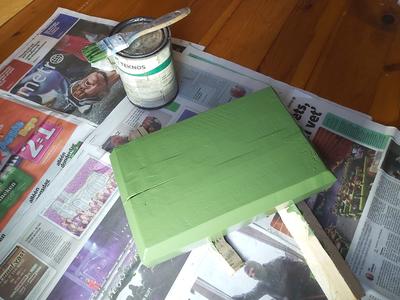 In the morning, DW baked the bread. It was delicious! I painted the green block a second time.
In the morning, DW baked the bread. It was delicious! I painted the green block a second time.
We plan to stay at the cottage next week and work from Sweden, but DW forgot to bring her keyboard, so the idea was to go into town today and buy a keyboard at a second-hand shop.
Today was the Swedish all saints day. We had no clue it was an extra special day when second-hand shops were closed. So we drove to the town and arrived when the second-hand shop was supposed to be open. It was closed. There were only disappointed, clueless customers in the parking lot.
We tried our luck and went to another second-hand shop, but it was also closed. It had no disappointed clueless customers except us in the parking lot. The second-hand shops in this town are run by evangelical organizations and they obviously need to give their employees a chance to enjoy all saints day; that is logical. This made DW slightly itchy, though.
For the lack of better, we went to a regular shop and bought a new keyboard. Regular shops are not closed on all saints day; they don't care if their employees are believers. Then we bought some groceries as well.
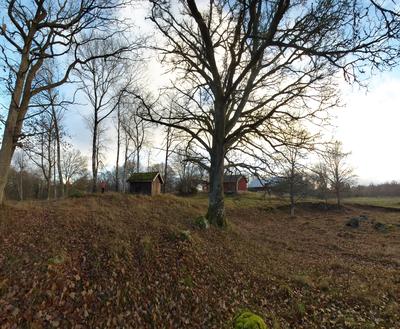 At the cottage, we took a lovely walk after lunch.
At the cottage, we took a lovely walk after lunch. 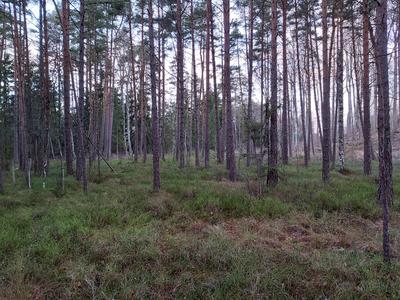 We walked on the north side of our property.
We walked on the north side of our property.
At one point, we scared a hare. I had not seen it, but we had been walking straight toward it. Two meters away, it started to run away from us.
After the walk, I started on a new project! Restoration of the spire. When we bought this property 15 years ago, it had a spire on the front porch. That spire fell down a year ago and is not feeling the same without it. The entire front porch needs a thorough restoration, but there is no time for that during this holiday.
|
I pieced together the old spire. It actually has some clunky shapes here and there. |
|
|
I climbed up to the porch roof and measured the angle of the roof. Then I transferred this to the plate I bought on Monday. |
|
|
When I was happy with the pattern on one side, I transferred it with oven paper to the other. I drew the pattern on the paper, then turned the paper around, positioned it correctly, and drew on top of the lines, transferring them to the plate. |
|
|
The original spire was made of two pieces, but this spire is made of one piece. I could finetune the design to be more eloquent because of that. |
|
|
Then I started sawing. |
|
|
And sawing. |
|
|
And sawing. Until DW had finished supper. |
Sunday 6 November
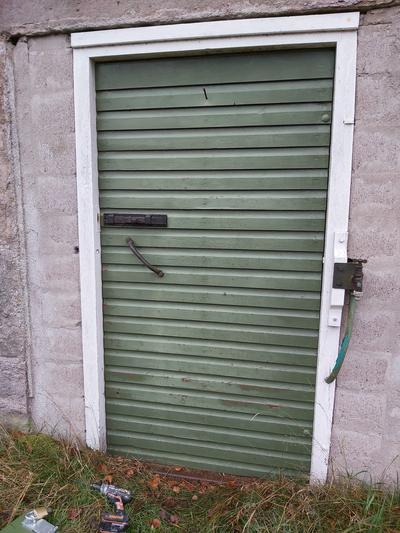 This was a drizzly day. It did not rain much at all, but there were tiny droplets all the time. I started today with installing the padlock for the barn. Here is how the door was before I started.
This was a drizzly day. It did not rain much at all, but there were tiny droplets all the time. I started today with installing the padlock for the barn. Here is how the door was before I started.
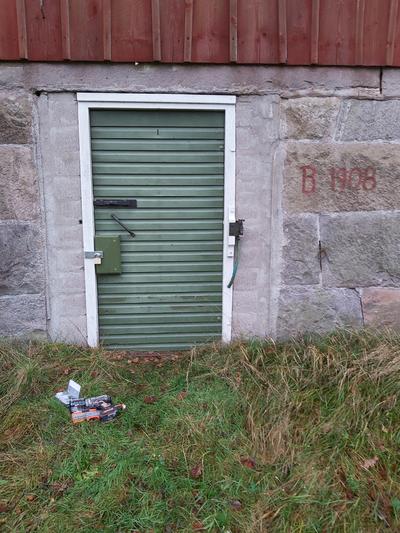 And then the result when I was done. The block is mounted on the door giving a good platform for the padlock.
And then the result when I was done. The block is mounted on the door giving a good platform for the padlock.
Now that the door got a proper lock, I decided to mount a lamp on top o the door plus a motion detection sensor so that there is light when coming here when it is dark. This was a more tedious project, and I took no progress photos. When working with electricity, it is best to turn off the electricity before connecting cables. The fuse cupboard is located at the other end of the barn, and I walked many times to that cupboard today. In the end, I got it working.
The B1908 means this barn was built in 1908; it is 114 years old.
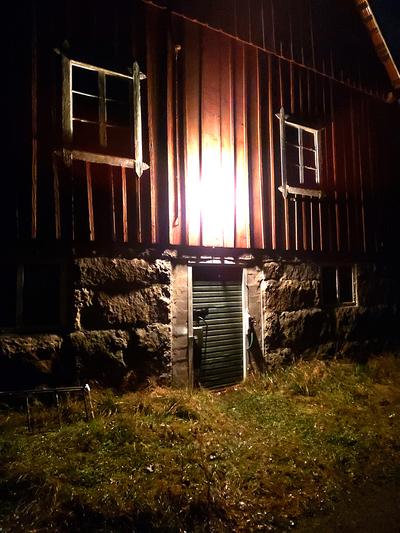 Here ends this week's blog. I have blogged almost twice as much as I usually do. I think there are exciting things here that I will enjoy reading myself one day. We had our week of holidays. Next week we will work again, but we will work from the cottage, so we have one foot still in holiday mode.
Here ends this week's blog. I have blogged almost twice as much as I usually do. I think there are exciting things here that I will enjoy reading myself one day. We had our week of holidays. Next week we will work again, but we will work from the cottage, so we have one foot still in holiday mode.
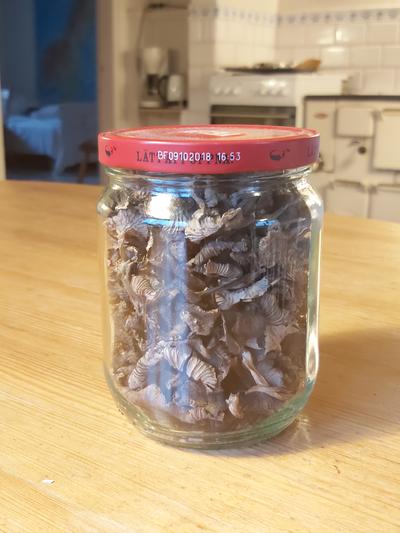 But wait, how did it go with the mushrooms? Did they dry properly? Yes, they did, and they fit nicely in one jar. We will take that jar with us to the Netherlands.
But wait, how did it go with the mushrooms? Did they dry properly? Yes, they did, and they fit nicely in one jar. We will take that jar with us to the Netherlands.
 I moved from Sweden to The Netherlands in 1995.
I moved from Sweden to The Netherlands in 1995.
Here on this site, you find my creations because that is what I do. I create.
